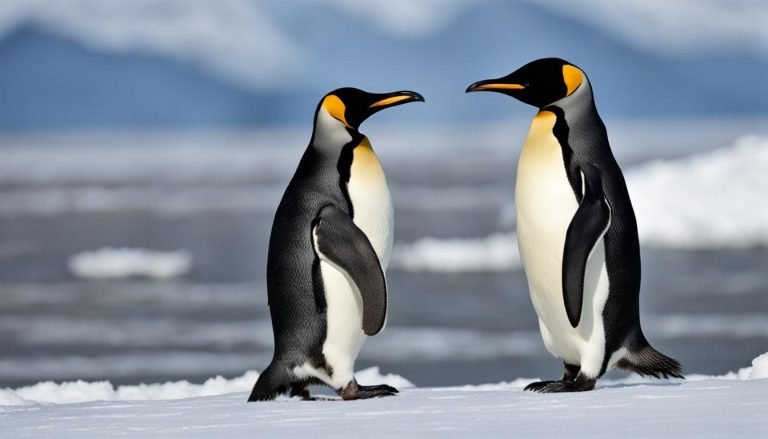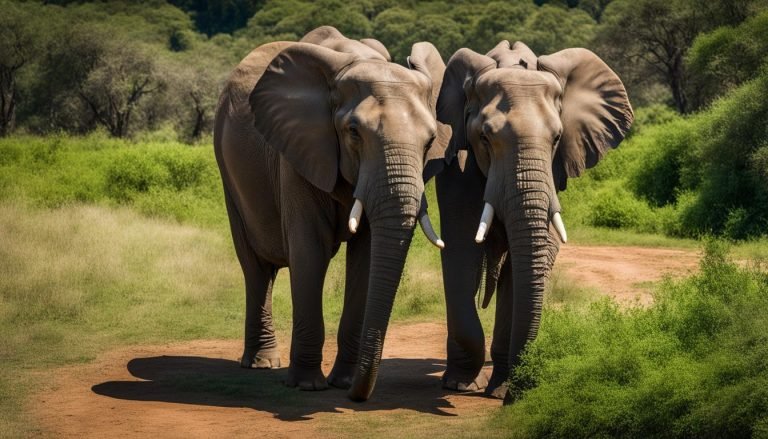How Do Chicken Mate? Reproduction Explained
Have you ever wondered how chickens mate? Chicken mating is a complex process that involves both roosters and hens, and it is essential for the reproduction of chicken populations. In this article, we will explore the intricacies of the chicken mating process and discuss various techniques used in chicken breeding.
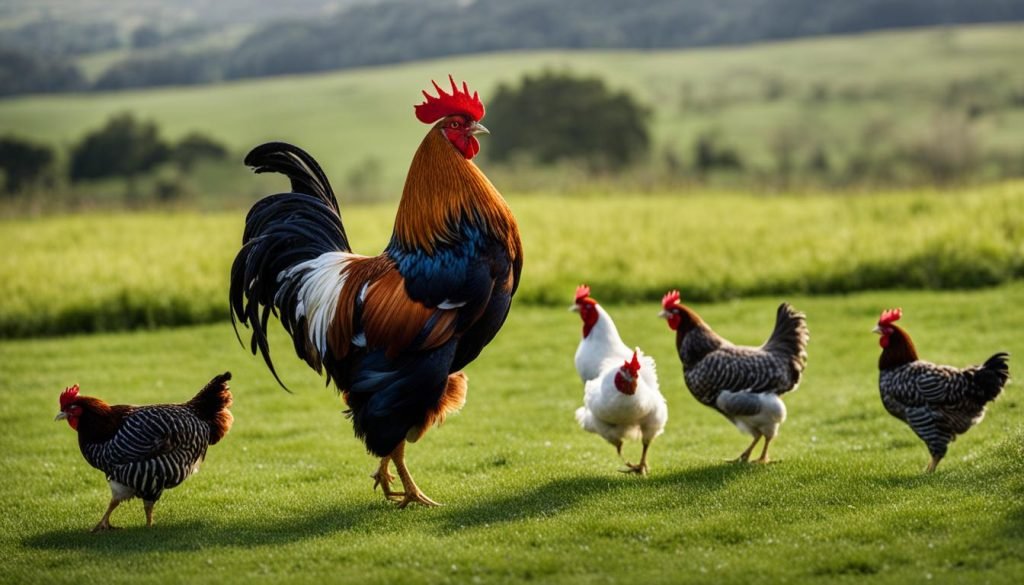
First, it is important to understand the basics of chicken reproduction. Chickens are oviparous, meaning that they lay eggs. Both male and female chickens have reproductive organs, but it is the rooster’s sperm that fertilizes the hen’s eggs. Once fertilized, the eggs undergo a period of incubation before hatching into chicks.
Now, let’s dive deeper into the chicken mating process and explore the roles of roosters and hens, their courtship behavior, and the fertilization and egg development process.
Key Takeaways:
- Chicken mating is essential for the reproduction of chicken populations.
- Roosters and hens both have reproductive organs, but it is the rooster’s sperm that fertilizes the hen’s eggs.
- After fertilization, the eggs undergo a period of incubation before hatching into chicks.
- In this article, we will explore the roles of roosters and hens, their courtship behavior, and the fertilization and egg development process.
- Various techniques are used in chicken breeding, which we will also discuss in this article.
Chicken Quiz
How well do you know chickens? Test your knowledge below!
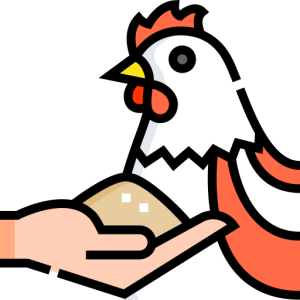
The Role of Roosters and Hens in Chicken Mating
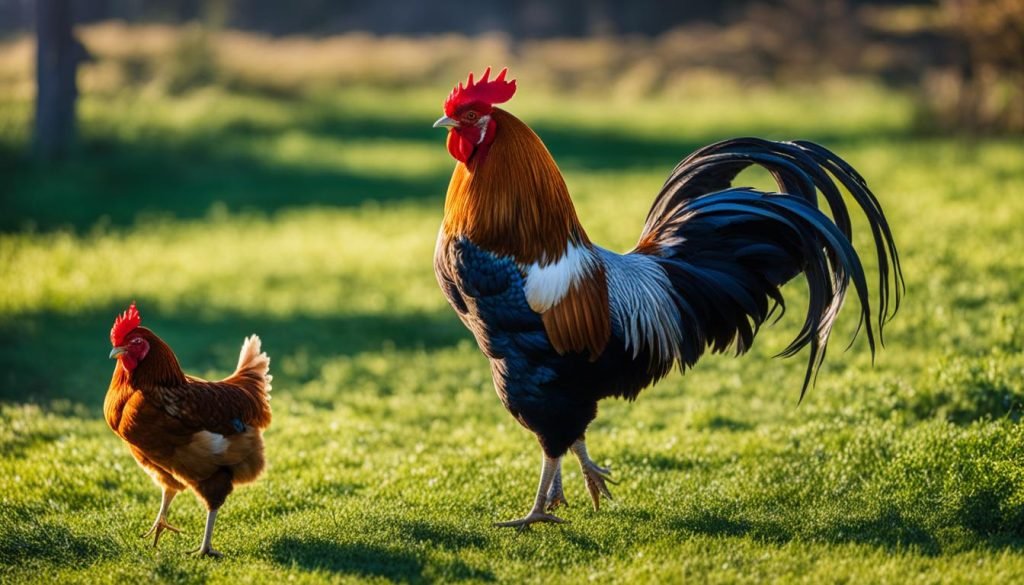
When it comes to chicken mating, both roosters and hens play crucial roles in the process. Roosters, the male chicken, fertilize the eggs of hens, the female chicken, through copulation. Hens, on the other hand, are responsible for laying the fertilized eggs that will eventually hatch into chicks.
Roosters use a variety of techniques during mating, including mounting and treading on hens to stimulate ovulation. During copulation, roosters transfer sperm from their cloaca to the hen’s reproductive tract, where fertilization takes place. Multiple matings over some time can increase the chances of successful fertilization and subsequent egg production.
Hens, on the other hand, can control which sperm fertilizes their eggs through a process called cryptic female choice. This process allows hens to select the sperm from the rooster they deem most genetically fit to father their offspring. This means that the strongest and healthiest roosters are more likely to father more chicks, resulting in stronger and healthier offspring.
Chicken breeding techniques have evolved to ensure desirable traits, such as egg production, meat quality, and disease resistance. Selective breeding involves choosing specific roosters and hens with desirable traits and breeding them to produce offspring with these traits. Modern breeding techniques often involve artificial insemination, where sperm from a desirable rooster is manually introduced to a hen’s reproductive tract. This allows breeders to bypass natural mating behaviors to ensure desirable traits are passed on to offspring.
“The strongest and healthiest roosters are more likely to father more chicks, resulting in stronger and healthier offspring.”
How Do Chicken Mate: Chicken Courtship Behavior and Mate Selection
Chicken courtship behavior is a complex process that involves multiple visual and vocal cues. Roosters will perform various displays, such as puffing up their feathers, lowering their wings, and making clucking sounds to attract hens.
Once a hen is interested, she will crouch down and allow the rooster to mount her. During mating, the rooster will transfer sperm from his cloaca to the hen’s oviduct through his phallus.
The reproductive organs of chickens play a crucial role in the mating process. In hens, the ovaries produce the ova or eggs, which are then released into the oviduct. The oviduct consists of several sections where fertilization, albumen deposition, shell formation, and egg-laying take place.
Did you know? The reproductive tract of a hen is shut down until she reaches sexual maturity, which is around 4-5 months of age. At this point, the hen’s body begins to produce eggs, and she is ready for mating.
| Reproductive Organ | Function |
|---|---|
| Ovary | Produces eggs |
| Infundibulum | Site of fertilization |
| Magnum | Albumen deposition |
| Isthmus | Shell membrane formation |
| Uterus | Shell formation and egg laying |
| Vagina | Receives sperm during mating |
| Cloaca | Opening for elimination of waste and transfer of sperm during mating |
The mate selection process in chickens is also interesting to observe. Hens are known to be selective about their mating partners, often choosing roosters with desirable physical characteristics, such as bright plumage. Additionally, certain hens may have a preference for specific roosters based on their vocalizations or displays.
Fertilization and Egg Development in Chickens
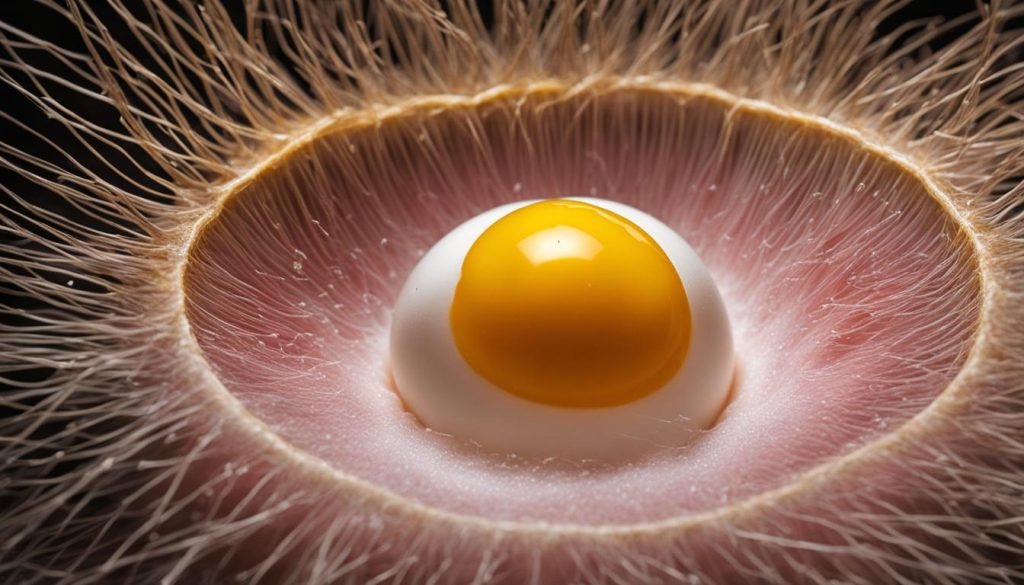
Fertilization is a crucial step in the chicken mating process, through which the sperm from the rooster combines with the egg from the hen, resulting in the development of a fertilized egg.
The sperm from the rooster enters the hen’s oviduct, where it fertilizes the egg in the infundibulum. This is the first segment of the oviduct where fertilization usually occurs.
After fertilization, the egg starts its journey through the rest of the oviduct where it undergoes numerous changes. The yolk and the white of the egg are formed in the magnum and isthmus, respectively. The shell membranes and the shell are then formed in the uterus. Finally, the egg is laid through the cloaca.
The fertilized egg is very sensitive to temperature and humidity changes and requires specific conditions to develop properly. Ideal incubation conditions for chicken eggs include a temperature of 99-100 degrees Fahrenheit and a humidity level of around 50-55%.
Fertilization is the first step in the development of a chicken egg. Successful fertilization results in the growth and development of an embryo within the egg.
The first signs of embryonic development can be seen after 24-48 hours of incubation. At this stage, the embryo looks like a small, white ring with a dark spot in the middle. This spot is called the blastodisc, which is the precursor to the embryo.
Over the next few days, the embryo starts to take shape, and features such as the head, tail, and wings become visible. By day 7, the embryo’s circulatory system begins to form, and by day 10, the beak and claws start to develop. By day 18, the embryo fills the entire egg and is ready to hatch.
Development of the Egg Yolk and White
The egg yolk is the primary source of nutrients for the developing embryo, while the egg white provides water and protein. The yolk and the white are formed in separate sections of the oviduct.
The yolk is produced in the ovary and then travels to the oviduct, where it is coated with egg white and shell membranes. The white is formed in the magnum and is added to the yolk in the isthmus.
| Oviduct Section | Egg Component Produced |
|---|---|
| Ovary | Yolk |
| Magnum | Egg White |
| Isthmus | Thick Albumen |
| Uterus | Shell Membrane and Shell |
Understanding the complex process of egg development and fertilization is crucial for breeders and farmers to ensure optimal conditions for healthy chicks.
The Incubation Period and Hatching Process
After fertilization, the egg must be incubated for about 21 days before it hatches. During the incubation period, the egg is kept warm and turned regularly to ensure proper development of the chick.
The temperature and humidity levels of the incubator are crucial for a successful hatching process. The ideal temperature for incubating chicken eggs is between 99 and 101 degrees Fahrenheit, while the relative humidity level should be around 50%.
As the chick develops inside the egg, it uses a specialized organ called the egg tooth to pip, or crack, the shell. The chick then uses its legs to push and rotate, eventually breaking free from the shell in a process known as hatching.
Once the chick has hatched, it will rest for several hours before standing and attempting to walk. It will still rely on its yolk sac for nutrition for the first few days of its life.
The hatching process is a critical stage in chicken reproduction, and proper incubation is essential for a successful hatch rate. Farmers and breeders must carefully monitor the temperature and humidity levels of the incubator, as well as turn the eggs regularly to ensure proper development.
Chicken Breeding Techniques and Importance
The process of chicken breeding involves selective breeding to develop desired traits while maintaining overall health. These techniques are essential to ensure sustainability and the availability of quality chicken products.
Selective Breeding Techniques
One of the most common techniques in chicken breeding is line breeding, which involves mating closely related chickens to produce offspring with desirable traits. This technique is best suited for traits that are easy to identify and are inherited in a simple Mendelian pattern.
Another common technique is crossbreeding, which involves mating two distinct breeds to create offspring that possess the desirable traits of both breeds. This technique is commonly used to improve the overall health and vigor of a breed and can also be used to create new breeds.
Hybridization is another breeding technique that produces chickens with improved characteristics, such as increased egg-laying capacity or improved meat quality. This technique involves crossing two breeds that have complementary traits to create a hybrid with a higher level of production efficiency.
Importance of Selective Breeding
Selective breeding is crucial for the development of desirable traits in chicken breeds. This process can help to improve egg and meat production, enhance disease resistance, and increase overall breed vigor. These traits are essential for the sustainability and profitability of the chicken industry.
One notable example is the development of the Cornish Cross breed, which is a hybrid breed that was specifically created for meat production. This breed has been widely adopted in the poultry industry due to its rapid growth rate and high meat yield.
Challenges in Chicken Breeding
Despite the benefits of selective breeding, there are also some challenges associated with this process. One of the major challenges is the risk of inbreeding, which can lead to reduced genetic diversity and increased susceptibility to disease.
Another challenge is ensuring that breeding programs do not compromise animal welfare. Breeding for certain traits can sometimes result in negative health consequences for the chickens, such as respiratory issues or reduced mobility.
Conclusion: Chicken Mating
Chicken mating and reproduction is a fascinating subject that requires a deep understanding of their behavior. We have explored the various aspects of the chicken mating process, from courtship behavior and mate selection to fertilization and egg development.
Roosters and hens play crucial roles in the mating process, with each having specific duties. During mating, the rooster transfers sperm to the hen’s reproductive tract, where fertilization occurs. The eggs then develop in the hen’s oviduct and require specific conditions for successful incubation, leading to chick development and hatching.
As we have seen, selective breeding techniques play a significant role in maintaining healthy and productive chicken populations. By selectively breeding chickens with desirable traits, breeders and farmers can increase productivity and achieve significant improvements in chicken quality.
We hope this article has given you a deeper understanding of how chickens mate and reproduce. By delving into the intricacies of the process, we’ve shown that chicken mating is a fascinating and complex subject that requires careful study.
If you’re interested in learning more about chicken mating and reproduction, be sure to check out our other articles on the subject.
Thank you for reading, and we hope you have enjoyed this exploration of the world of chicken mating!


